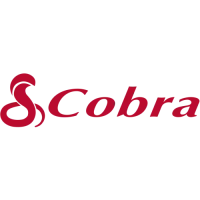The most important part of VCO circuitry is a voltage controlled
variable capacitor called varicap or varactor diode whose
capacitance dépends on DC voltage applied to its cathode.
Controlling dc Voltage
Voltage Dependent
0 Capacitor
◄
------------
Varactor Diode
T 0
___________
___
DC Voltage
The varactor diode is responsible for setting VCO frequency, and
once set it régulâtes the VCO frequency against the reference.
The VCO frequencies are chosen in 16 to 17 MHz range as shown on
table 1. To obtain transmit signal the VCO is mixed with
10.24MHz. As an example for channel 1:
10.24 + 16.725 = 26.965MHz
For receiver mode the VCO is used as a first local oscillator.
Example, channel 1:
26.965 - 16.27 = 10.695MHz
The above first IF of 10.695MHz is mixed again with 10.24MHz
crystal oscillator frequency which serves as the second local
oscillator.
10.695 - 10.24 = 0.455MHz
As can be seen above the VCO frequency shifts from 16.725 to
16.27MHz when changed from transmit to receive for the same
channel 1. The shift is accomplished by "read only memory"
incorporated inside the PLL IC-202 between the selector switch
and the VCO divider (programable). When transmit logie signal
is applied to the IC-202 through pin 19, the programable divider
will divide incoming VCO frequency by 3345 to produce 5kHz
sampling signal. 16,725-J— 3345 = 5kHz
For the receiver mode the programable divider will automatically
change to divide the VCO frequency by 3254.
16270 3254 = 5kHz
Note that the reference frequency of 5kHz is obtained by
dividing the 10.24MHz by 2048 times. (5kHz reference is used
instead of 10kHz for division convenience). See table 1 for
transmit/receive mode VCO frequencies.
19 PLUS -2-

